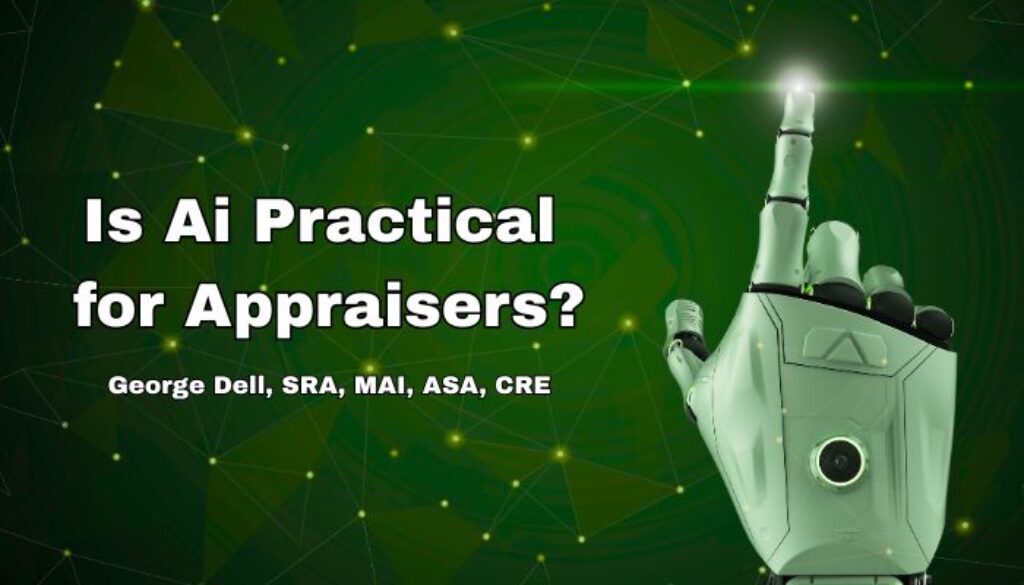“Practical” means useful and sensible. And it should be somehow better than what went before.
Artificial Intelligence learns from experience, recognizes patterns, and understands language. Today, most AI applications are “narrow,” in that they are intended to solve particular problems. For appraisal, this means formulating the problem, gathering relevant data, prediction, and presentation.
Ai depends on the existing body of knowledge, whether outdated or not. Or it can rely on specifically-provided new information. It also depends on the guidance (prompts) it is given.
In appraisal, the existing body of knowledge emphasizes the “careful” picking of comparables, then making adjustments to liken to the subject features. If this ai is prompted to “do an appraisal” it will quickly figure out the goal of “appraisal” – form an opinion which is credible: “worthy of belief.” It will strive for your belief, not measurable reliability.
The existing body of knowledge, such as contained in The Appraisal of Real Estate, is replete with admonitions that “the appraiser should be extremely careful…” These types of statements do not help AI. (Although it might pick up patterns of “carefulness” versus “uncarefulness.”)
An example of this is the admonitions on picking comps. We have only three instructions in that text: the sale should be similar. It should be competitive. And it should be “able to be compared.”
How does an Ai respond to “similar, competitive, and ‘able to be compared?’” That is not a model. It is not an algorithm. It’s ill-defined and quite general. We need practical.
To be practical for appraisers to use, AI needs to be narrow — that is, designed to solve the particular problem. Here is the challenge:
- “Appraisal” is defined as an opinion. Its measure is “credibility” as “worthy of belief.” Ai will work towards believability — but not usefulness, accuracy, or reliability. When asked, AI tends to ‘sell’ what it is asked to sell. “It will likely mimic the “please believe me and my support.”
There is no known model or algorithm in the appraisal literature that sets out a process for discriminating as between what is a comp, or not a comp.
If we (or the Ai) pursue the word “similarity,” we are forced to dive into the world of data-centric, computative methods – also known as “data science.” Data science is 80% get the right data. The underlying principle is that if you get the data right, the rest follows easily!
To properly use Ai, the appraiser must form good prompts for it to use to get right results – the appraiser must know some things. Like, how to ask for data science similarity things.
The appraiser must know the nature of a good prompt. They must know the underlying data models, as appropriate. These require expert judgment. Good prompts require a knowledge of data science as applied to real estate valuation and reliability measurement.
Evidence Based Valuation (EBV)© is constructed on the principles of data science, but is narrowed to the specific challenge of valuation and risk scoring.
Good results from AI interaction require reliable algorithms and professional models. Practical Ai solutions must build on something better than “trust me” judgment.
Ai and EBV© go together.
